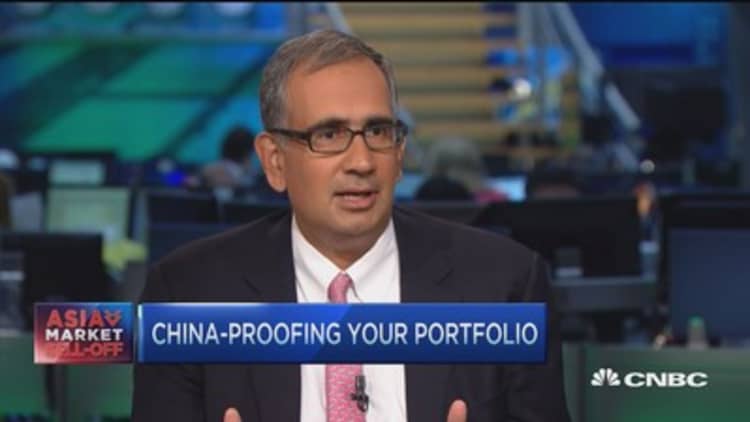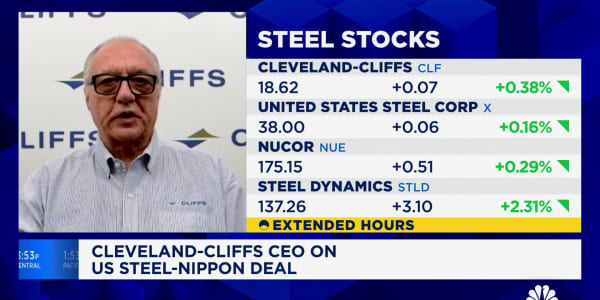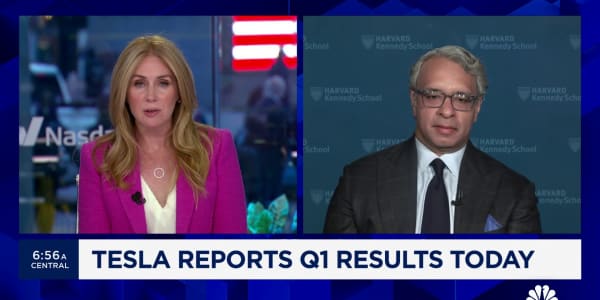
Think about the Chinese economy and stock market as basically being a fun-house mirror view of its American counterparts.
Debt-driven economy? Check. Central bank and government stimulus aimed at goosing the stock market? Check. Highly leverage-driven growth in that stock market? Check.
True, China and the U.S. have key differences. China's gross domestic product gains have dwarfed what's happened in America. Equity values represent a much higher proportion of U.S. wealth. And, of course, domestic stocks are not in free fall like they are in China.
Yet, consider this kernel of China analysis recently published by Citigroup's economic team:
While China's data suggests growth stabilization, policymakers' demonstrated aversion to volatility across many assets could propagate moral hazard, delay price adjustment, lead to prolonged resource misallocation and build-up of future risks.
Substitute "U.S." for "China" in that sentence and the analysis still applies pretty well.
In fact, when critiquing the Federal Reserve's response to the financial crisis in 2008, many economists cite those very potential pitfalls: Asset misallocation due to focus on liquidity and stock market gains; the moral hazard that comes from an overreliance on policy stimulus; and problems with price discovery due to the effects unnaturally low interest rates have had on the post-crisis corporate earnings cycle.
U.S. stocks have zoomed in the post-crisis years, with the up more than 210 percent even though annualized GDP has never eclipsed 2.5 percent during the period.
China's conditions have been somewhat different: A roaring economy built on mountains of debt but a flatlining stock market. In an effort to spread the wealth and ease off the debt throttle, Chinese authorities have undertaken multiple stimulative measures over the past year or so to boost the stock market.
Read More Three charts explaining China's strange stock market
The results had been wildly successful—until recent days, when fears of a Chinese economic slowdown spooked equity investors. The is still up 75 percent over the past 12 months and 15 percent year to date, but has dropped nearly 13 percent in July. The index is up 3.1 percent year to date but has surrendered 7.2 percent this month.
Nigel Green, founder and CEO of deVere Group, in a statement advocated that investors should globally diversify and thus "China-proof" their portfolios:
The slide indicates that the Chinese authorities are perhaps reducing capital inflows following their frenzied measures to support the stock market three weeks ago. It appears that, unsurprisingly, those measures are unsustainable in the longer-term, that the market is currently vulnerable without government support, and investors remain uncertain of the situation. This latest crash is another chapter in the China slowdown story. The unfolding situation in China is likely to create volatility in the financial markets until the end of the year.
Chinese investors generally have seemed keen to stick with the market, but recoil at each sign the government may decide not to provide a backstop.
Sound familiar?
Peter Boockvar, chief market analyst at The Lindsey Group, drew a parallel to the belief that "one can successfully bully and manipulate markets higher for any prolonged period of time." In a note to clients, he pointed out:
Overnight there was talk that China was backing off from supporting stocks maybe in a test to see how markets would settle out without them. I applaud this, but short-term pain is the obvious result and inevitable hangover. It also is another example of the aftermath of when after central banks blow air into the bubble the air comes out once they are done.
Indeed, the U.S. market has shown a close tether to Fed money printing, with stocks rising while the central bank was injecting liquidity during the three rounds of expansive quantitative easing plus a round of balance sheet-neutral Operation Twist and falling when it withdrew.
The Fed ended QE3 in October with its balance sheet at $4.5 trillion—and the S&P 500 has gone exactly nowhere since. Citing economic stimulus measures during the Obama administration, Boockvar said, "We can also look at cash for clunkers, the homebuying tax credit and one-time tax rebates as economic examples that once one-time gimmicks run their course, there is always a give back as all it does is pull forward activity."
Read More What's fueling the frenzy in China stocks?
As far as market manipulation goes, though, China may be in a league by itself. The government has taken nearly a dozen steps in recent weeks to stem the equity selloff, none of them particularly effective after so much earlier success.
In the meantime, market watchers are noticing anomalies. ETF.com's Dave Nadig, for instance, chronicled instances in which China has simply halted trading on some A-shares when their declines upset the broader market. No wonder the China Shenzhen A-Share index is up about 95 percent over the past year.
That's interference on a scale well beyond anything the Fed has done, but investors are still wary of the other similarities.
"China, the engine of global economic growth, is decelerating rapidly." Doug Kass, head of the Seabreeze Partners Management hedge fund, said in a note. "And its manipulated stock market ... is characteristic of our market during the late 1990s Internet boom—unstable, overpriced and ready for a fall."






